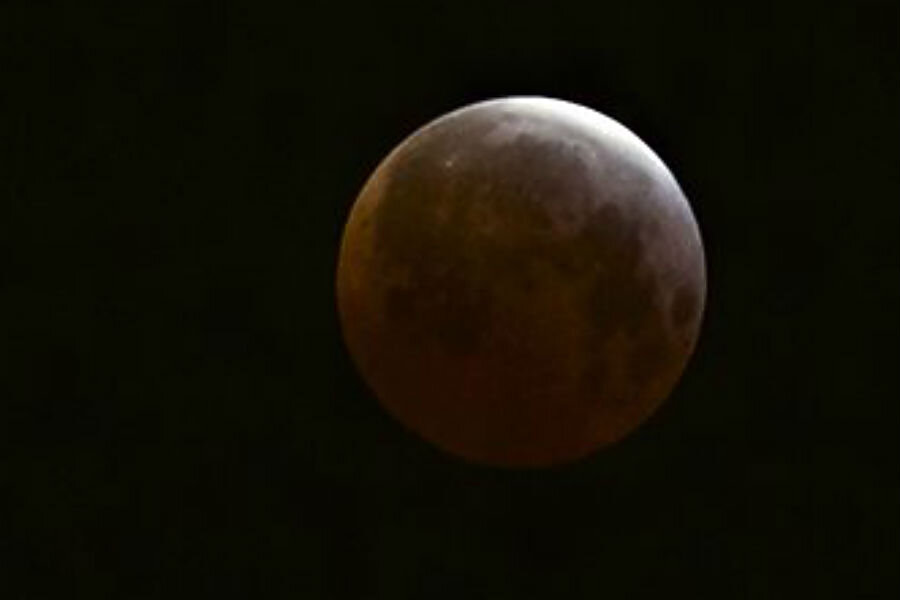Short but rosy: The 'blood moon' eclipse
Loading...
| Los Angeles
The total eclipse of the moon lasted only a short time Saturday, but it still dazzled.
Early risers in the western U.S. and Canada should have been able to catch a glimpse before dawn Saturday. The moment when the moon was completely obscured by Earth's shadow lasted four minutes 43 seconds, making it the shortest lunar eclipse of the century.
NASA astronomer Mitzi Adams told the Guardian that the shortest total lunar eclipse on record was in 1529 and lasted one minute and 42 seconds.
Some skygazers complained that clouds prevented them from seeing any of the 3½-hour lunar show.
People in eastern Australia, New Zealand and Japan viewed the eclipse at night, and posted photos on Twitter, including this one from Melbourne, Australia.
During the eclipse, according to NASA, the Moon often looks reddish because sunlight has passed through Earth's atmosphere, which filters out most of its blue light. This eerie, harmless effect has earned the tongue-in-cheek nickname "blood moon."
However, as is often the case with celestial events, local weather conditions can be a spoiler.
The total eclipse was unusually brief because the moon passed through the upper part of Earth's shadow. Longer eclipses occur when the moon passes through the middle of the shadow.
This eclipse marks the third in a series of four lunar eclipses in a row, known as a "tetrad." The first in the series occurred on April 15, 2014, with the second in the tetrad of eclipses in September of 2014, and the final will be September 28, 2015, notes NASA.





